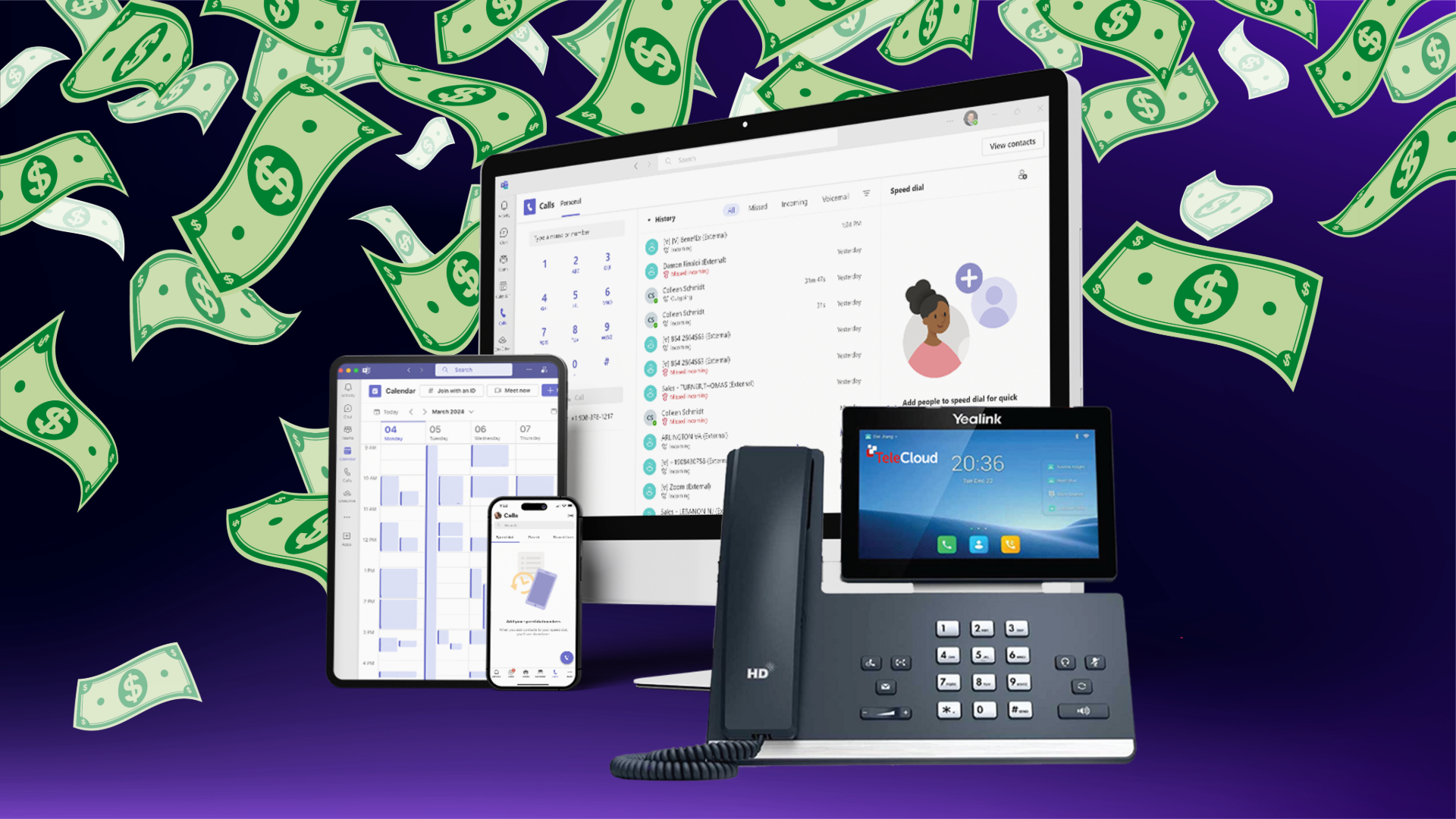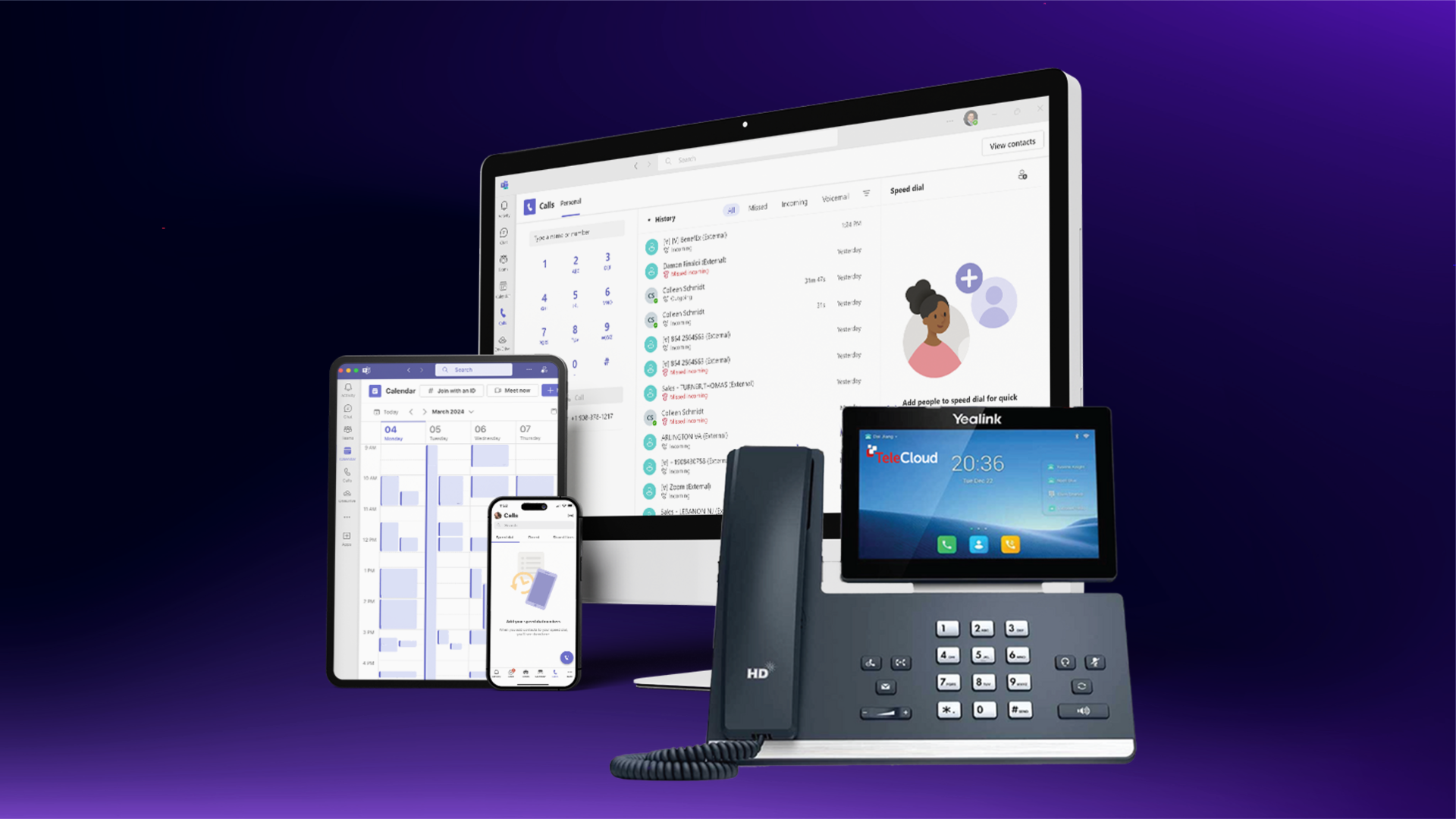5 Telecom Trends IT MSPs Can’t Afford to Ignore Going Into 2026
October 14th, 2025
4 min read

AI is becoming strategic, Microsoft Teams Voice is reshaping client expectations, hardware is evolving, not disappearing, vendor relationships are shifting, and MSPs who align telecom strategy with business value will gain lasting competitive advantage.
For years, many managed service providers treated telecom as an accessory to IT infrastructure. But in 2025, communications have become the core of digital experience. Businesses now expect seamless integration between voice, data, collaboration, and customer experience, and they’re turning to MSPs to make it happen.
At TeleCloud, we’ve seen this shift firsthand through our daily work with MSP partners nationwide, watching telecom evolve from a simple cost center into a key growth driver for business agility. We recently hosted a webinar discussing these exact topics, and this article continues that conversation by sharing the main takeaways for MSPs.
In this guide, we’ll explore the five telecom trends defining 2025 and how you can use each to strengthen client relationships, protect revenue, and position your MSP for long-term success.
1. AI Is No Longer Experimental; It’s Strategic
AI has officially moved from novelty to necessity. The biggest leap forward isn’t just in automation but in how AI interprets, analyzes, and learns from human conversation. The combination of AI transcription, sentiment analysis, and agentic AI is redefining how MSPs and their clients understand customer engagement.
AI transcription ensures that every interaction becomes usable data. Sentiment analysis turns tone and emotion into measurable insights. Agentic AI takes it further, proactively suggesting next steps, automating ticket creation, or summarizing entire calls with accuracy. This makes telecom not just a communication channel but a knowledge engine.
What MSPs Should Do:
- Integrate AI tools that include transcription, sentiment, and agentic capabilities into your UCaaS or call analytics platforms.
- Show clients how these insights improve sales, support, and service outcomes.
- Partner with vendors that prioritize AI-driven context and data accuracy rather than flashy automation.
2. The 800 lb Gorilla: Microsoft Teams Voice
Microsoft Teams Voice has become impossible to ignore, but the real question for MSPs isn’t whether to use it; it’s how to deploy it strategically. Many clients don’t understand the difference between Microsoft’s Calling Plan and a direct integration through a provider. This distinction is where MSPs can add real value.
Microsoft’s Calling Plan ties customers directly to Microsoft for billing and management, often limiting flexibility and margin for MSPs. An integrated approach, on the other hand, allows MSPs to retain control, offer richer features, and unify Teams Voice with existing UCaaS, SIP, and call center tools.
What MSPs Should Do:
- Educate clients about the difference between Microsoft’s Calling Plan and integrated voice options.
- Offer Teams integrations that maintain client ownership, flexibility, and advanced functionality.
- Stay ahead of Microsoft’s roadmap and communicate updates proactively to clients.
3. Is Phone Hardware Dead? Not Quite, It’s Transforming
The truth is: phone hardware isn’t dead. In many industries: healthcare, legal, manufacturing, and hospitality, physical phones remain essential for compliance, reliability, and ease of use. For many professionals, especially those accustomed to desk phones, tactile communication still matters.
What’s changed is the range of options. Businesses can now choose from physical desk phones, web phones, and mobile apps that all tie into the same cloud platform. This flexibility gives employees the freedom to communicate the way they prefer, without compromising consistency or visibility.
What MSPs Should Do:
- Support hybrid environments by offering a mix of desk phones, web phones, and mobile app solutions.
- Guide clients toward device strategies that meet user preferences while reducing operational complexity.
- Provide training and resources to ensure smooth transitions for users moving between hardware and software tools.
4. Technology Advisors: Don’t Let the Wolf in the Hen House
Vendors are increasingly approaching clients directly with promises of simplicity and savings, cutting MSPs out of the relationship. This trend threatens the advisory role that defines your business. Once a vendor controls the communication channel, it’s difficult to regain trust or visibility.
Protecting your relationships means reinforcing your position as the client’s strategic advisor. Be the voice that explains not just what technology does, but why it matters and why MSP guidance remains essential.
What MSPs Should Do:
- Partner only with vendors who respect channel integrity and safeguard your client base.
- Strengthen your presence through quarterly business reviews and regular communication check-ins.
- Emphasize your role as an advisor who simplifies telecom complexity, not a middleman.
5. What’s In It for You? Reclaiming Growth and Relevance
Every trend leads back to one outcome: opportunity. Telecom is no longer peripheral; it’s central to the managed service model. By building telecom into your stack, you create new revenue channels, deepen client loyalty, and enhance your value proposition.
With intelligent routing, AI-driven analytics, and integrated voice solutions, MSPs can move beyond traditional IT management and deliver outcomes tied directly to business performance.
What MSPs Should Do:
- Make telecom an intentional part of your managed service portfolio.
- Partner with providers who prioritize MSP-first programs that preserve your brand and client control.
- Leverage analytics to show clients the measurable business impact of smarter communications.
The MSP Playbook for Telecom Growth
Every one of these trends points toward the same future: MSPs who lead with intelligence and integration will define the next phase of managed communications.
Your next steps:
- Audit your telecom offering to identify gaps in AI, Teams integration, and mobility.
- Strengthen your vendor relationships to ensure long-term protection.
- Train your team to lead telecom conversations through data and outcomes.
- Build hybrid-ready solutions that meet clients wherever they work.
- Reframe telecom as a growth enabler, not just infrastructure.
Telecom’s Turning Point for MSPs
Telecom has evolved into one of the most strategic layers of business technology. AI, Teams, intelligent devices, and partner alignment aren’t future concerns, they’re today’s imperatives.
MSPs who act now can build stronger, more profitable relationships and become the architects of their clients’ communication success.
TeleCloud helps MSPs evolve from static phone systems to intelligent communication platforms that enhance CX, retention, and ROI all backed by partner-first service and boutique-level support.
If you’re ready to future-proof your telecom offering, connect with TeleCloud’s MSP program team to explore solutions built for growth, retention, and competitive edge.
vin@telecloud.net OR call/text 908-378-1218
Topics:





